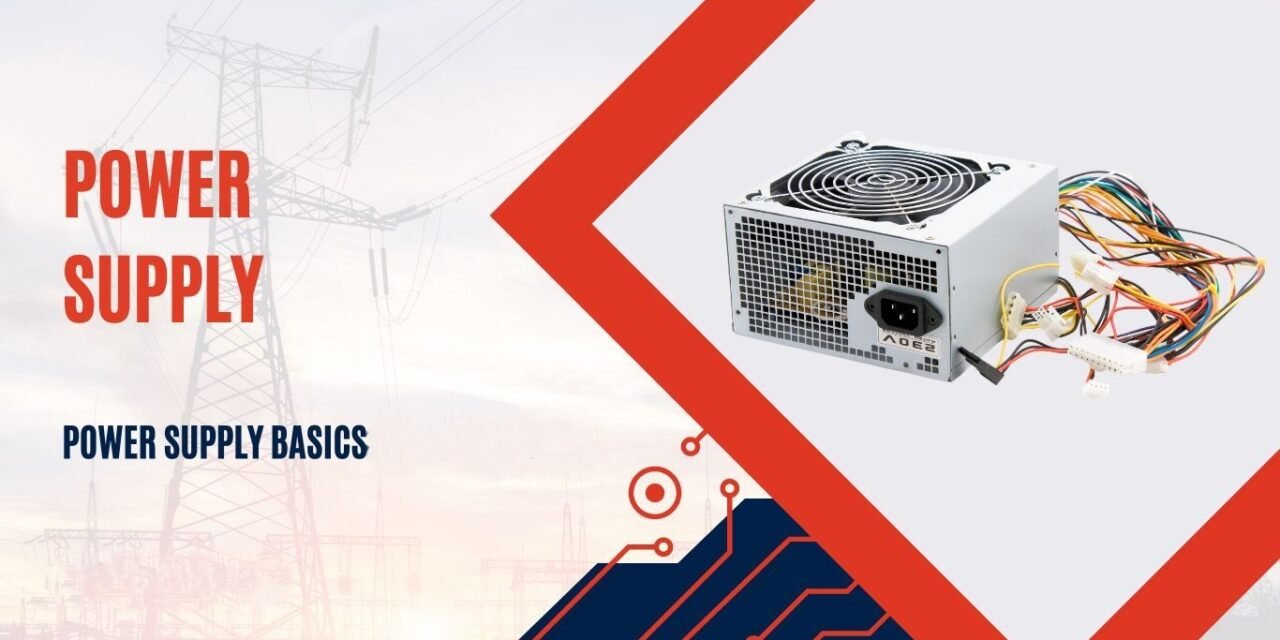Power supplies play a critical role in ensuring the overall safety and reliability of electronic devices and systems. Here are some key ways in which power supplies contribute to safety:
1. Voltage Regulation and Protection:
- Stable Voltage Output: A power supply ensures that the voltage provided to electronic components is within a safe and specified range. Fluctuations in voltage can cause malfunction or even damage sensitive devices. Regulated power supplies, in particular, maintain a consistent output voltage despite changes in input or load conditions, preventing voltage spikes that could harm components.
- Overvoltage Protection: Many power supplies feature overvoltage protection circuits that automatically shut down or reduce the output voltage if it exceeds a certain threshold, protecting sensitive devices from damage.
2. Current Limiting:
- Prevention of Overcurrent: Power supplies often include current-limiting features that prevent excessive current from flowing to the load. This is especially important for devices with low current tolerance, such as microcontrollers, memory chips, and sensors, which could otherwise burn out from a sudden surge in current.
- Short-Circuit Protection: In the event of a short circuit, the power supply can detect the condition and immediately stop supplying power, thus preventing further damage to both the power supply and the connected devices.
3. Overtemperature Protection:
- Thermal Shutdown: Power supplies can include built-in temperature sensors that monitor the internal temperature. If the temperature exceeds a safe level, the power supply can shut down or throttle its output to prevent overheating, which could otherwise damage both the power supply and the connected electronic systems.
- Heat Dissipation Mechanisms: Good design in power supplies ensures proper heat dissipation (e.g., through heatsinks, fans, or ventilation), which helps maintain the safety of the system by preventing thermal buildup.
4. Isolation and Grounding:
- Electrical Isolation: Power supplies provide electrical isolation between the input and output using transformers or other isolation techniques. This prevents the high-voltage AC input from directly interacting with the low-voltage DC output, ensuring safety for users and sensitive electronics.
- Proper Grounding: Proper grounding is essential for the safe operation of the power supply and the connected devices. A grounded power supply helps minimize the risk of electric shock, as well as reduce electromagnetic interference (EMI) that could disrupt nearby sensitive equipment.
5. Fusing and Circuit Breakers:
- Fuses and Circuit Breakers: Many power supplies include fuses or circuit breakers that act as protective devices. If a fault or overload occurs, these components will break the circuit, preventing further damage to the power supply and the connected devices. This is a simple yet effective safety mechanism.
6. Surge Protection:
- Surge Suppression: Power supplies often incorporate surge protection features to defend against high-voltage spikes caused by lightning, power line disturbances, or other sudden surges. Without surge protection, electronic components could be damaged by these spikes.
- Transient Voltage Suppressors (TVS): TVS diodes or similar components are commonly used in power supplies to clamp transient voltages, limiting their impact on electronic circuits.
7. EMI and RFI Filtering:
- Electromagnetic Interference (EMI) Reduction: Power supplies typically include filters to reduce EMI and Radio Frequency Interference (RFI), which can cause the malfunction of other nearby electronic devices. By suppressing these unwanted emissions, power supplies help maintain the safety and proper functioning of other systems.
- Regulatory Compliance: Power supplies are designed to meet specific safety and EMI standards (such as IEC, UL, or CE), ensuring that they do not emit harmful interference and that they operate safely in sensitive environments.
8. Surge, Spike, and Noise Filtering:
- Voltage Spike Protection: Power supplies often include circuits to block sudden voltage spikes or surges, which can occur when power is first turned on or during lightning storms. This protects the electronic system from potential damage due to these short, high-voltage events.
- Noise Filtering: Many power supplies have noise filtering capabilities to prevent the transmission of electrical noise to the connected devices. This is crucial for precision systems, such as medical or audio equipment, where external noise can affect operation and safety.
9. Compliance with Safety Standards:
- Certified Designs: Power supplies are designed to meet stringent safety standards and certifications such as UL, CE, RoHS, and others. Compliance with these standards ensures that the power supply is safe to use and meets specific quality and safety criteria for its intended application.
- Safety Features: Power supplies built to these standards include multiple safety features, such as shock protection, proper insulation, overload protection, and secure enclosures.
10. Battery Protection in Uninterruptible Power Supplies (UPS):
- Safe Battery Operation: In devices like UPS systems, the power supply includes battery protection circuits that prevent overcharging, deep discharging, or overheating of the batteries, which could otherwise lead to safety hazards like fires or leakage.
- Maintaining Backup Power: The UPS ensures that in the event of a power outage, the backup power supply operates safely, allowing for graceful shutdown of critical systems and preventing data loss or damage to hardware.
Conclusion:
Power supplies are crucial for the safe operation of electronic devices by ensuring that they receive the correct and stable power while protecting them from electrical hazards such as overvoltage, overcurrent, short circuits, and thermal damage. Their role extends beyond simple power conversion to include vital safety features that safeguard both the electronic components and the end users.
Hashtags
#PowerSupplySafety #OvercurrentProtection #OvervoltageProtection #ShortCircuitProtection #SurgeProtection #ThermalProtection #FuseProtection #CurrentLimitingFeatures #PowerSupplySafetyFeatures #StablePowerForSafety #ReliablePowerSupplies #ConsistentPowerForDevices #SafePowerDelivery #PowerSupplyReliability #RegulatedPowerSupply #PowerStabilityForSafety #ElectricalIsolation #IsolationTransformers #SafeElectricalIsolation #GalvanicIsolation #IsolatedPowerSupplies #SafetyThroughIsolation #PreventDeviceDamage #ProtectivePowerSupplies #SafeDevicePowering #PreventOverloadDamage #SafePowerForElectronics #ProtectionFromPowerSurges














